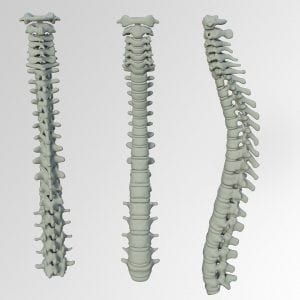Syringomyelia
What is syringomyelia?
Syringomyelia is the development of a fluid-filled cyst within the spinal cord. Over time, the cyst may enlarge, damaging the spinal cord and causing pain, weakness and stiffness, among other symptoms.What are the symptoms of syringomyelia?
Symptoms associated with syringomyelia include the following:- Muscle weakness and wasting (atrophy)
- Loss of reflexes
- Loss of sensitivity to pain and temperature
- Stiffness in back, shoulders, arms and legs
- Pain in neck, arms and back
- Bowel and bladder function problems
- Muscle weakness and spasms in legs
- Spinal curvature (scoliosis)
What causes syringomyelia?
It’s unclear exactly what causes syringomyelia. When it develops, cerebrospinal fluid — the fluid that surrounds, cushions and protects the brain and spinal cord — collects within the spinal cord itself, forming a fluid-filled cyst. Several conditions and diseases can lead to syringomyelia, including:- Chiari malformation, a condition in which brain tissue protrudes into the spinal canal
- Meningitis, an inflammation of the membranes surrounding the brain and spinal cord
- Spinal cord tumor, which may interfere with the normal circulation of cerebrospinal fluid
- Conditions present at birth, such as a tethered spinal cord, a condition caused when tissue attached to the spinal cord limits its movement
- Spinal cord injury
How is syringomyelia diagnosed?
A diagnosis of syringomyelia is based upon identification of characteristic symptoms, a detailed patient history, a thorough clinical evaluation and a variety of specialized tests. Some of these tests include:- MRI
- CT Scan
What are the treatments for syringomyelia?
The treatment of syringomyelia is directed toward the specific symptoms that are apparent in each individual. Treatment may require the coordinated efforts of a team of specialists. Surgical options include:- Treating Chiari malformation
- Draining the syrinx
- Removing the obstruction
- Correcting the abnormality
Where can I find out more about syringomyelia?
Syringomyelia Articles

Chiari Malformation: Community Brings Christmas Parade to 7-Year-Old’s Door
James Moore
December 25, 2023
Read More »



Community Brings Christmas Parade to 7-Year-Old Girl’s Door
Patient Worthy Contributor
December 18, 2020
Read More »

Teenage Dancer Affected by Chiari Malformation
Patient Worthy Contributor
September 4, 2020
Read More »

Chiari Malformation Patient to Shave Her Head to Say “Thank You” to Hospital
Patient Worthy Contributor
March 24, 2020
Read More »

Mother Fights For Life-Changing Surgery For Her Son With Scoliosis
Meagan Fulps
February 13, 2018
Read More »



